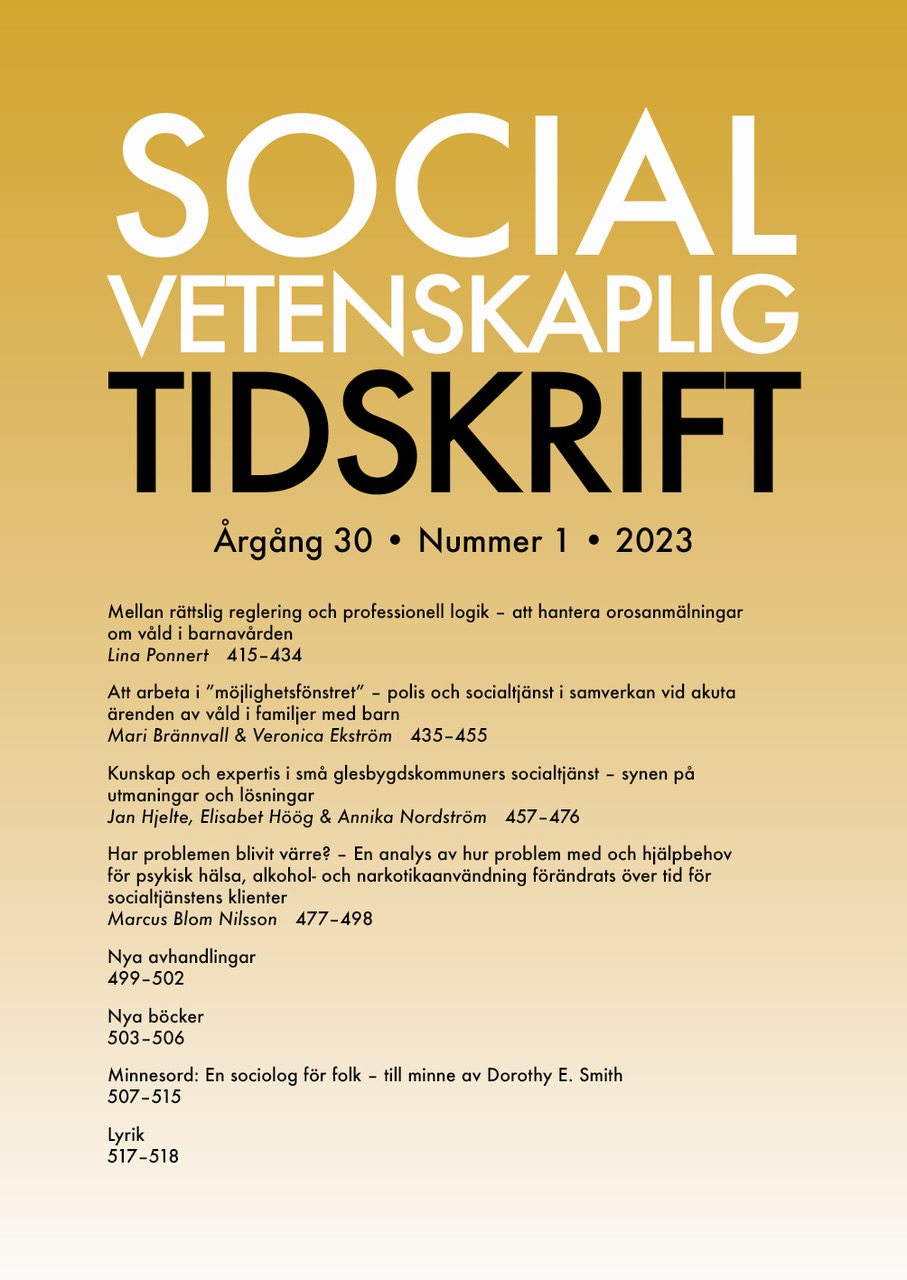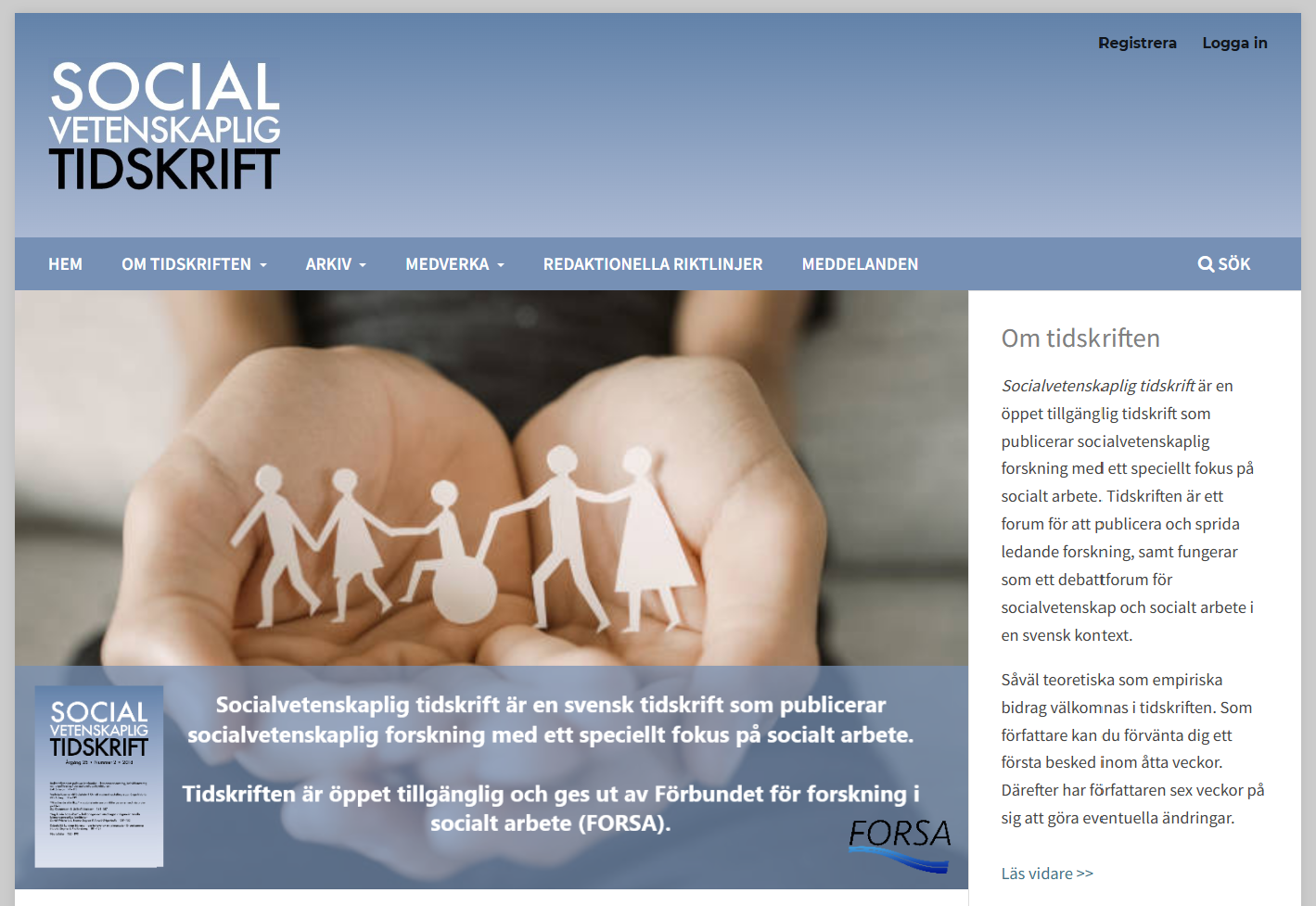Using the window of opportunity
Co-operation between police and social services in cases of domestic violence in families with children.
DOI:
https://doi.org/10.3384/SVT.2023.30.1.4274Keywords:
domestic violence, cooperation, social services, police, window of opportunityAbstract
This article describes and discusses the cooperation between police and social services when working in accordance with the so-called Icelandic model. The aim of this article is to explore what the Icelandic model means for police officers and social workers work and cooperation in acute cases of domestic violence in families with children during the so called window of opportunity. Empirical data consists of interviews with police officers and social workers. Theories of new institutionalism and street level bureaucrats are used in the analysis.
Results show that the Icelandic model has led to increased cooperation between police and social workers at the crime scene. The police and social workers state that they, to a greater extent, can focus on carrying out what they regard as their own tasks in acute cases of domestic violence when they work according to the model. At the same time, the model has entailed increased control of their work, which has reduced the degree of discretion and possibility for professional assessments and priorities. The perception that there is a "window of opportunity" is shared by the police and the social services and they believe that coordinated efforts in the acute phase are important.
Downloads
Published
How to Cite
Issue
Section
License
Copyright (c) 2023 Mari Brännvall, Veronica Ekström

This work is licensed under a Creative Commons Attribution 4.0 International License.
Allt material i Socialvetenskaplig tidskrift publiceras sedan 2022 (Vol 28 Nr 2) med omedelbar öppen tillgång (open access), under Creative Commons-licensen CC BY 4.0. Upphovsrätten till innehållet tillhör respektive författare.
Allt innehåll i tidskriften är fritt tillgängligt utan kostnad och får fritt läsas, laddas ned, kopieras, delas, skrivas ut och länkas. När innehållet används måste författare, källa och licens anges. Författaren kan fritt göra sin publicerade text tillgänglig på institutionella och internetbaserade arkiv, exempelvis sitt lärosätes digitala arkiv eller andra tjänster för detta.
Inga publiceringsavgifter tas ut vid publicering i Socialvetenskaplig tidskrift.


